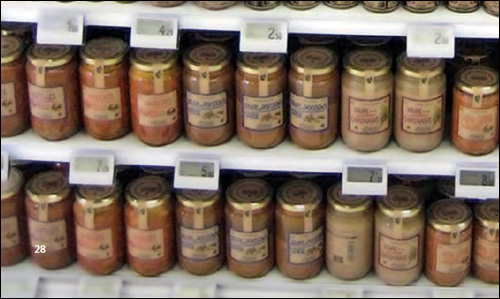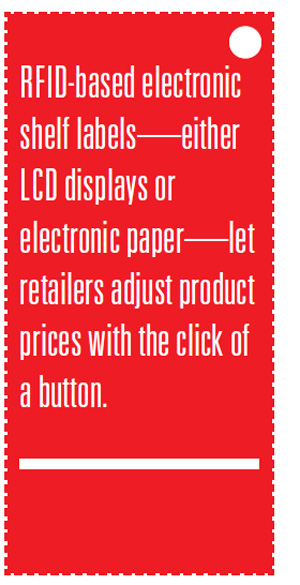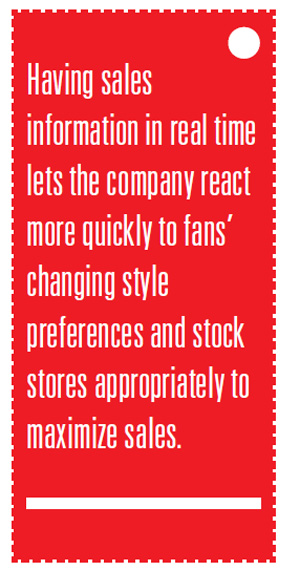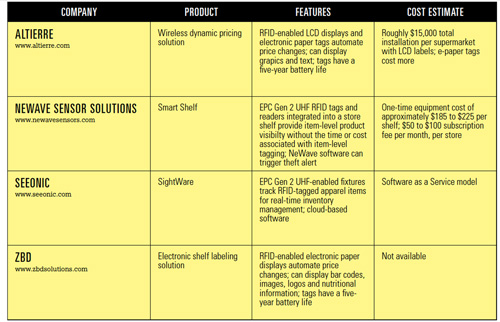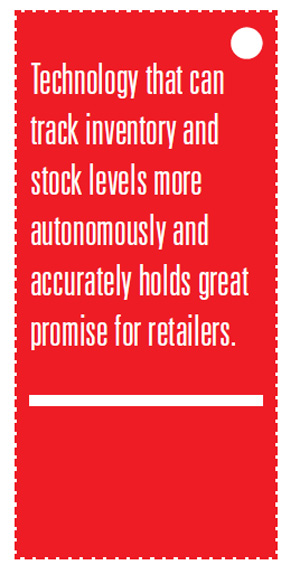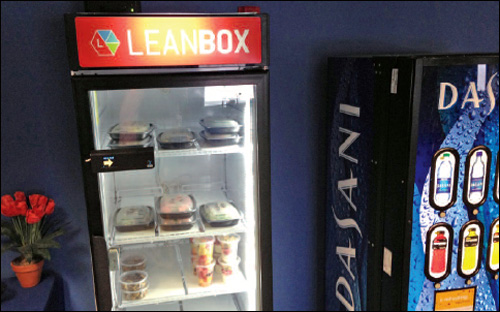Dec 01, 2012Hospitals are using smart cabinets equipped with radio frequency identification technology to monitor medical supplies and pharmaceuticals, and factories and construction sites are setting up smart cribs to manage tools (see RFID Smart Shelves and Cabinets and A Guide to RFID Tool-Tracking Solutions). In both cases, RFID is helping companies and organizations track high-value items that are costly to replace when they are misplaced or stolen—or, in the case of pharmaceuticals, when they expire and are no longer effective or safe to use. The smart cabinets and cribs also reduce the time workers spend looking for lost items.
Now, RFID providers are developing smart fixtures, shelves and labels for apparel, supermarket and other retailers that allow them to benefit from the technology without adopting it throughout the store. While major retailers have begun RFID-tagging apparel items to improve inventory accuracy—and J.C. Penney has announced plans to tag 100 percent of its merchandise—many retailers, especially smaller ones, will not transition to RFID overnight.
These solutions are designed to provide a convenient and cost-effective way to manage frequent price changes and fast-moving products, including inexpensive items such as T-shirts and some consumer packaged goods (CPG). Improving these operations can reduce labor and increase sales.
Here's what you need to know about smart fixtures, shelves and labels. For more information, see the vendor table on page 31.
Smart Fixtures
Some specialty apparel items have a very short shelf life, because customer demand is determined by events or seasons. RFID-enabled fixtures and software that track RFID-tagged items give retailers and manufacturers real-time in-stock visibility, to ensure all the merchandise shipped to a store is placed on sales-floor displays in a timely manner, says Bill James, VP of business development at Seeonic, which offers the SightWare solution.
Creative Apparel Concepts is a Minneapolis-based apparel manufacturer that produces branded logo apparel for more than 125 colleges and universities. Before major game weekends, retailers in college towns stock up on these products to meet spikes in demand for items with home-team logos, as well as short-term demand for shirts promoting the visiting team. "Sometimes 100,000 sports fans will come to town for a weekend, and they buy like crazy," James says. "They go to the apparel racks and stuff flies off."
During the week preceding a major sports event, the retailer places RFID-tagged T-shirts and other logo merchandise on a SightWare-enabled fixture, which has an integrated EPC Gen 2 reader. The reader, which includes ThingMagic's Impinj-based reader module and Seeonic's patented antenna system, transmits the tag data wirelessly to its cloud-based Seeniq software platform, which gives Creative Apparel Concepts real-time inventory counts.
After a game, Creative Apparel Concepts can quickly access the final sales data, and see which sizes and styles sold best. Typically, it takes up to two weeks to access sales data from the retailer. Having sales information in real time lets the company react more quickly to fans' changing style preferences and stock stores appropriately to maximize sales.
While the SightWare solution is being used at just one retail location, James says, Creative Apparel Concepts and its retail partner are currently in discussions about expanding the technology to multiple locations.
Fluctuations in customer demand can vary from store to store and are not always tied to a season or event. A major U.S. automotive battery supplier is using Seeonic's technology to track inventory levels at repair shops, parts dealers and other retail partners several times each day. This helps the manufacturer ensure its complete product range is in stock at all times (see Battery Supplier Deploys RFID to Manage Product Inventory).
In the near future, manufacturers and retailers are not likely to RFID-tag individual beverages, personal-care products and other fast-moving consumer goods. But they would like the item-level visibility RFID can provide, to make restocking more efficient and reduce out-of-stocks.
NeWave Sensor Solutions says its RFID-based Smart Shelf solution provides item-level visibility without relying on item-level tagging. Its technology is based on what the company calls an item-level antenna. "For decades, the industry was using off-the-shelf antennas coupled with unique readers and tags," says NeWave CEO Joe Ryan. Smart Shelf features a patented EPC Gen 2 ultrahigh-frequency RFID antenna integrated into a store shelf system. An EPC Gen 2 UHF passive tag is mounted on the shelf beneath each product. The tag placements on the shelves are dictated by the retailer's planogram, a diagram showing the number and position of each product on a shelf.
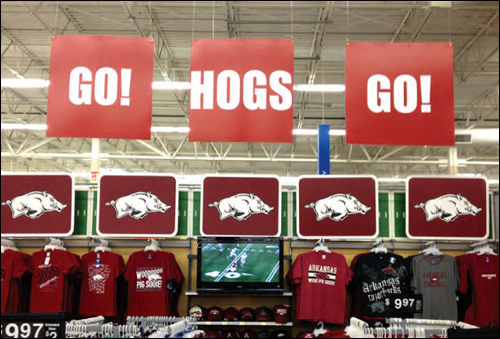
When a shelf is fully stocked, the products block the tags from being read. Each time a product is removed, the antenna reads the tag ID and sends it to the NeWave software, so the retailer can see the real-time stock level. The system also works with shelves that include a spring-loaded "pusher."
Two major U.S. supermarket chains and a top-selling brand of energy drinks are currently running pilot projects with Smart Shelf technology, Ryan says.
In addition to tracking inventory in real time, retailers can use the NeWave solution to reduce theft. A retailer can set the NeWave software to trigger an alert if it detects a "shelf sweep," the quick removal of many items from a shelf simultaneously. Shelf sweeps often involve the theft of a shelfful of a single, high-value item, such as razor blades or baby formula.
Like restocking, changing product prices on retail store shelves is a time-consuming process. RFID-based electronic shelf labels—either LCD displays or electronic paper—let retailers adjust product prices with the click of a button. Each e-label is mounted on a store shelf and linked wirelessly to a central computer network.
Altierre, a San Jose, Calif.-based technology company, has developed an RFID-based electronic shelf label solution that can use either LCD displays or electronic paper price tags. Each tag contains a proprietary battery-powered 2.45 GHz RFID tag. The new e-paper tags provide sharper, higher-quality graphics and text compared with the graphical LCD screens. Both have a five-year life expectancy.
Click here to view a larger version of the above chart.
The system enables two-way communications between the LCD or e-paper tag and Altierre's software, which is integrated with the store's existing product and price database. The labels, which contain internal clocks, can be preset to adjust the product's price based on the date and time, completely automating the process.
"Fundamentally, the way we approached the solution is by extending the reach of the Internet to the store shelves," says Altierre CEO Sunit Saxena. "We looked at a number of different technologies to communicate with the labels, including Wi-Fi and Bluetooth, but with those we needed to sacrifice either power or range." None of the RFID tags on the market met these needs adequately, he says, so Altierre developed its own RFID solution, which includes access points that communicate over hundreds of channels to avoid collision on specific bands—this is particularly important when the retailer needs to change the price of many different items simultaneously.
In addition to slashing labor costs through dynamic price adjustments, the labels also allow retailers to communicate more information to customers than a small paper label could. The labels, for example, might toggle through multiple displays that provide not only cost but also nutritional information, suggested pairings or special offers and coupons.
Altierre says more than 1,000 U.S. and European retail stores—including E.Leclerc supermarket, in France, and select Walgreens drugstores and Kohl's department stores, in the United States—are using its smart-label solution.
The retail industry is primed and ready for more ways to automate the tracking of individual products inside stores, says Justin Patton, managing director of the University of Arkansas' RFID Research Center. Technology that can track inventory and stock levels more autonomously and accurately holds great promise for retailers, he adds, especially if the systems offer additional benefits, such as improving customer satisfaction or short-term product promotions.
Smart fixtures and shelves let retailers and manufacturers improve visibility of specific products or product categories, without having to deploy an expensive, storewide RFID technology infrastructure. But even when a store is RFID-enabled, movable fixtures can be used to see if merchandise sells better at, say, the front of the store than another location.
In addition to tracking "fast fashion," like college sports T-shirts, Seeonic's James says retailers and manufacturers are interested in using smart fixtures to monitor small, high-value, high-margin items, such as cosmetics, fragrances and jewelry. That's because inventory can be taken in the morning and the evening, with no labor or training involved.
James says retailers can see a return on investment within a year, thanks to increased sales resulting from more consistent product stocking. The store that is working with the Seeonic equipment with Creative Apparel Concepts, for example, found it was stocking too many large and extra-large T-shirts, which is what its general clientele tends to purchase, and not enough small and medium shirts, which is what university students want. Consequently, the store now stocks and sells more smalls and mediums.
Altierre says its solution can be installed in several hours, with a typical cost to a supermarket of approximately $15,000 with LCD labels, which cost approximately $5 each when purchased in bulk. The e-paper labels are more expensive, but Altierre declines to disclose specific costs. "Retailers can mix and match LCD displays with e-paper for the lowest total cost of ownership, and a fully customizable solution that is right for each store," Altierre's Saxena says. "A retailer could choose to install these [e-paper label] high-end display signs and tags in certain high-visibility/high-impact portions of their stores, while saving money on the lower-impact areas with our low-cost, LCD-based signs and tags."
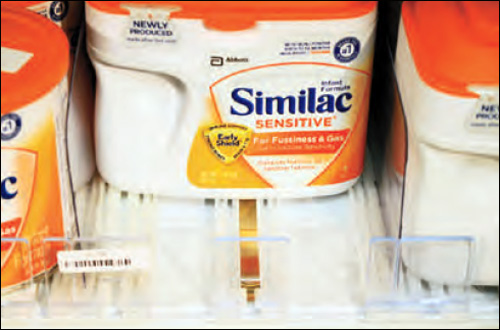
Altierre hardware can accommodate upgrades to enable passive RFID communication via the Near-Field Communication (NFC) standard, Saxena says. This will allow retailers to increase the benefits they get from shelf labels, beyond improved store operations. For example, customers could hold NFC-enabled phones up to select shelf labels to receive special offers on particular products through shopper loyalty programs.
NFC-enabled smart shelves also can make shopping easier for visually impaired and elderly customers. French supermarket chain Groupe Casino, along with researchers at the Institut de la Vision and Think&Go NFC, a French NFC solutions provider, are developing shelf labels with integrated NFC tags. Shoppers who hold their NFC phones up to the shelf labels will be able to launch an application that renders the product and price information in large print on their phones. The technology could enable other applications to enhance the shopping experience. For instance, customers could download recipes or automatically link product coupons to their orders when they check out. It even opens the door to skipping the checkout line, by allowing for payment via a mobile platform.
LeanWorks, a health-food restaurant in West Roxbury, Mass., was inundated with catering orders from corporations, gyms and hospitals. To keep up, it developed LeanBox, a low-fat packaged food and meal plan business, and partnered with ShelfX, a startup based near Denver, to create a self-service vending system. "It facilitated our ability to supply healthy food anywhere, anytime," says LeanWorks CEO Shea Coakley.
The ShelfX system uses Near-Field Communication (NFC) technology to enable self-checkout at employee cafeterias, health clubs and other nontraditional retail centers. Scales integrated into the shelves holding food are programmed to know the weight of each shelf when it is fully stocked, as well as the type and price of each product on the shelf. NFC readers are mounted nearby and linked to ShelfX's Web-based financial transaction software.
ShelfX recently worked with LeanWorks to install a refrigerated ShelfX case at Solid Body Fitness, a gym in Dedham, Mass. To purchase LeanWorks food or drinks from the case, a gym member holds a membership card, which contains an NFC tag linked to his or her account, to a reader mounted outside the case. The individual then removes the desired items from the case, and the ShelfX software scans each shelf's weight to determine how many of each item were removed. It deducts the total price from a prepaid account linked to the member account. (Gym workers periodically inspect the cases to ensure the products are on the proper shelves.)
"Our main focus is fitness centers," Coakley says, "but we've also signed contracts with a hospital and some corporations that don't have a full café."

